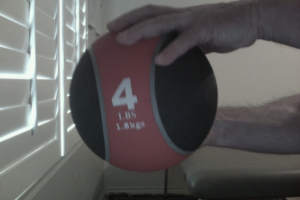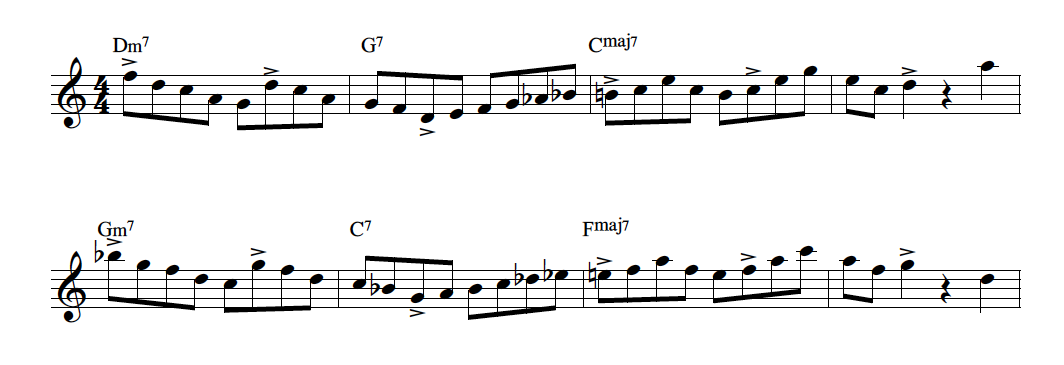“Each faculty acquires fitness for its function by performing its function.”
-Herbert Spencer
A good number of musicians who seek my help as an Alexander Technique teacher do so because of a problem with endurance. In the simplest sense, they can’t seem to play for prolonged periods without fatigue and/or pain.
In many of these cases, these musicians have tried to improve their endurance by working directly on increasing strength (with or without their instrument). This often proves to be ineffective. Here’s why:
For musicians who practice and play on a regular basis (regardless of instrument), most endurance problems are actually problems of coordination.
Playing cello and chopping wood
Yes, it does take strong shoulder girdle muscles and back muscles to play an instrument like the cello. But it doesn’t take nearly the strength to play the cello as it does to chop a pile of wood.
Yet you might find a cellist who can chop wood all afternoon and not get nearly as exhausted in his neck, back and shoulders as he would practicing cello for an hour. (I actually had one such Alexander Technique student as this.)
If you take into consideration the quote above by Herbert Spencer, the best thing a cellist can do to develop the necessary endurance to play the cello would be to, well… play the cello.
According to Spencer’s principle, it is the activity of playing the cello that builds the kind of muscular endurance specific for the task. (In exercise science, this is the training principle of specificity.)
So why does this cellist, who can chop wood all day, get fatigued so easily playing his instrument?
The answer is simple: He is coordinating himself in a way that is counterproductive to playing cello.
It is a matter of what he is doing with his entire body as he carries out his skill.
In the case of this particular musician, he was over-straightening his spine, while at the same time stiffening his neck, as he held on rigidly to his elevated shoulders.
Because of all this holding on, his arms were not free to move out of his back. His shoulders were doing way too much work, and his upper back muscles (which are very well-designed for such a task) were doing far too little. His shoulders would get painfully exhausted after just 20 or 30 minutes of playing.
You could hear it in his sound, which tended to be small and sometimes brittle.
To make a long story short, as he began to improve his coordination (through his work with the Alexander Technique), he began to improve his endurance. Just that simple.
If you find yourself constantly struggling with endurance as you play or sing, it is likely a problem of coordination. You can take any very fit and strong person, have them carry out a task in a mechanically disadvantageous enough way (poorly coordinated), and they’ll get exhausted in no time at all.
Strength and endurance
Now to be clear, strength most certainly has an impact upon endurance. But let’s also be clear about what strength and endurance are.
From a functional point of view, strength can be defined as the ability to exert force against an external resistance. Whereas, endurance is the ability to maintain low levels of force for extended periods of time.
In a well-coordinated organism, increasing muscular strength can have a marked improvement upon endurance. But for others, if these stronger muscles are not coordinated in an optimum way, there might be little to no improvement in endurance.
I’ve not yet had a musician come to me for help who has needed to “strengthen” anything, directly. They just need to rethink and re-experience kinesthetically, a more efficient coordination. This coordination comes about primarily by subtracting unnecessary, habitual tension, and the lasting changes typically develop gradually, but surely.
What you can do
So again, if you struggle with endurance, or have students who do, here are a few things to keep in mind that might help:
- The test of time-If you’ve been working for more than a couple of months on a particular exercise in an attempt to address an endurance issue, and you are noticing little or no improvement, you need to change course. Adaptations in strength and endurance come relatively quickly. If you’re going on for prolonged periods without improvement, either change the exercise, or (more important!) consider that your problem is one of coordination. (This is where a good Alexander teacher can help.)
- Think of the whole instead of the parts-As I mentioned above, you are using your entire self, your whole body, to play. Begin to notice where you might be unnecessarily tensing yourself or taking yourself out of balance as you play. See if you can begin to lessen the effort.
- Specifity is best-If you think that you actually do need more strength to deal with certain demands of playing your instrument, aim at doing things that are as specific as possible to the task at hand. For example, daily long tone exercises on a wind instrument to strengthen the facial/embouchure muscles are much more effective than a series of “tension” exercises without the instrument (like vigorously pressing and releasing your lips and corners in multiple repetitions). Specific activity leads to optimum functional strength.
- Equipment-Sometimes what is making you exhausted is simply poor equipment choices. I recently gave a Skype consultation to a very good tenor saxophonist who was struggling mightily with fatigue. It turned out that one of the biggest factors was his mouthpiece. The lay and tip opening were just not right for his anatomy and his conception of sound. When he changed to a better mouthpiece, his problem was effectively solved. Stay open-minded about your equipment. As your coordination improves, sometimes your equipment needs change (this is always a good thing!)
- Health considerations-It is also possible that your issue with muscular fatigue might be of a medical nature. If you’ve tried just about everything (including my suggestions here), believe it’s not an issue of coordination, yet you still have problems and/or, your condition seems to worsen, by all means seek medical consultation. It could be a variety of issues, from neurological, to autoimmune, to orthopedic, or more. Get yourself the help you need.
So it’s fine if you want to do exercises every day to increase/maintain your endurance to play. The reason many accomplished musicians do so is because they get good results from their efforts.
But I can’t help but think about what Eddy Merckx (arguably the best racing bicyclist in the history of the sport) said when asked what the best thing a serious competitive cyclist should do to improve:
“Ride lots.”
And so it should be for us. Play lots. Improve your coordination. Enjoy the results.


